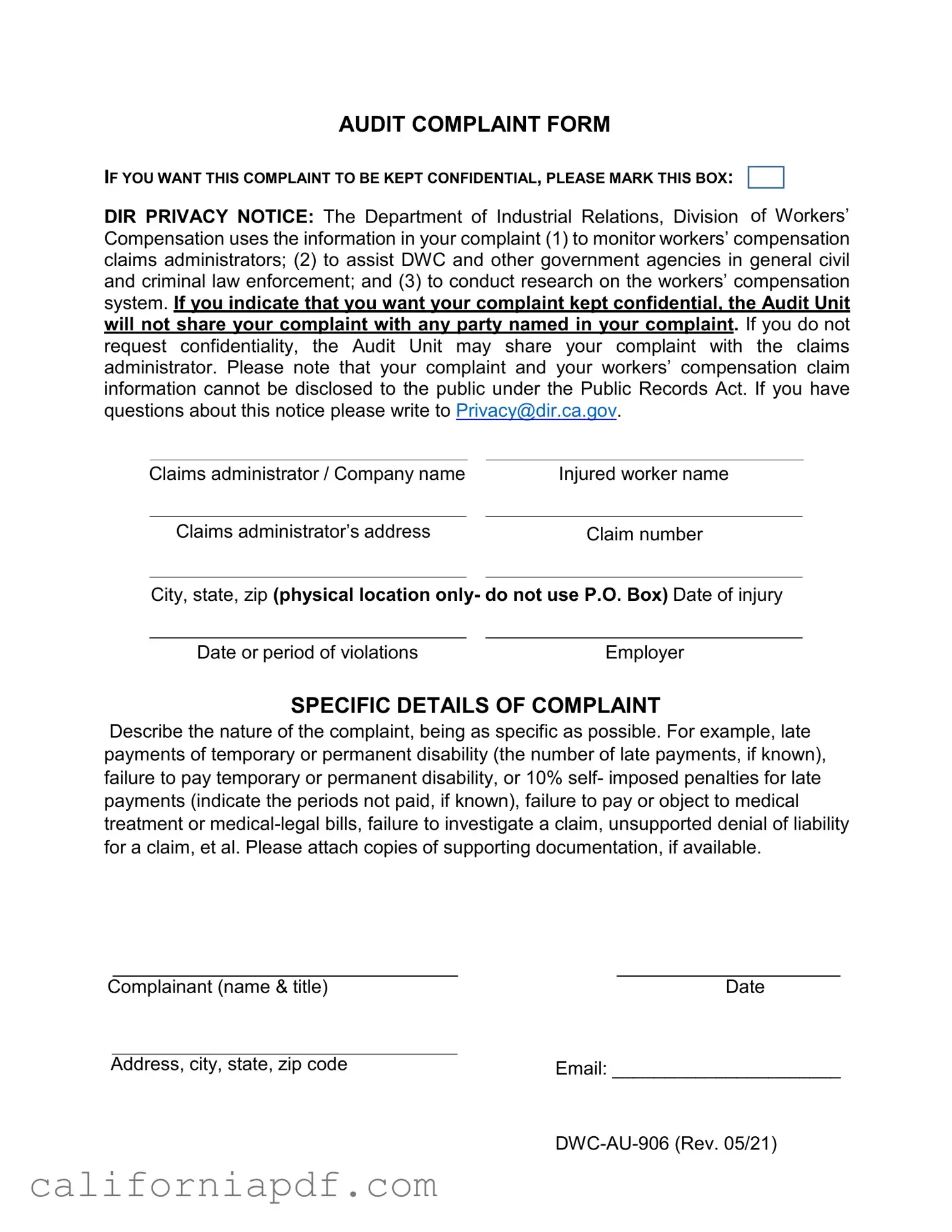The California Audit Complaint Form is designed for a few key objectives. First, it serves to monitor workers' compensation claims administrators to ensure they are managing claims accurately and legally. Secondly, it aids the Department of Industrial Relations (DIR), Division of Workers’ Compensation, and other governmental agencies in carrying out general civil and criminal law enforcement related to workers' compensation. Lastly, the form is used to conduct research on the workers' compensation system to possibly identify systemic issues and areas for improvement.
Can I request confidentiality when submitting a complaint?
Yes, individuals filing a complaint have the option to request confidentiality. By marking the specified box on the form, the Audit Unit is directed to not share the complaint with any party named in the complaint. This means that the details of the complaint, including the complainant’s identity, will be kept from the claims administrator and anyone else named in the complaint. However, if confidentiality is not requested, the Audit Unit may share the complaint with the claims administrator involved.
What happens if I do not request confidentiality?
If confidentiality is not requested when submitting the Audit Complaint Form, the Audit Unit may share the complaint with the claims administrator mentioned in the complaint. Sharing the information can include the nature of the complaint, specific allegations, and potentially the identity of the complainant. This is often done to facilitate the resolution of the complaint or to further investigate the issues raised.
Will my complaint be disclosed to the public?
No, complaints submitted through the Audit Complaint Form, along with your workers' compensation claim information, cannot be disclosed to the public. This protection is in accordance with the Public Records Act. The information remains confidential within the department, ensuring that individuals’ privacy rights are respected throughout the process.
Several types of complaints regarding the handling of workers' compensation claims can be reported on the form. These include, but are not limited to:
-
Late payments of temporary or permanent disability benefits, including details on the number of late payments.
-
Failure to pay temporary or permanent disability benefits.
-
Self-imposed penalties for late payments not being paid.
-
Failure to pay or object to medical treatment or medical-legal bills in a timely manner.
-
Failure to investigate a claim properly.
-
Unsupported denial of liability for a claim.
Complainants are encouraged to be as specific as possible and attach copies of supporting documentation if available.
To submit a complaint, fill out the Audit Complaint Form with all required details. This includes the claims administrator or company name, address, the injured worker's name, claim number, and the date or period of the alleged violations. You will also need to provide specific details of the complaint, including but not limited to, issues related to payments, investigative procedures, and liabilities. It’s crucial to describe the nature of the complaint with as much specificity as possible, attaching copies of any supporting documentation. Lastly, include your name, title, and contact information. For more guidance, you may contact the Division of Workers’ Compensation or refer to their website.

